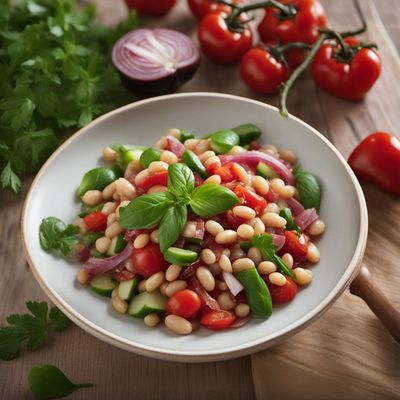
Ingredient
Canned/jarred fish
The Ocean's Bounty in a Can
Canned/jarred fish is a preserved form of seafood that is typically packed in oil, water, or brine. It comes in various types such as tuna, salmon, sardines, and anchovies. With a firm texture and distinct flavors, canned/jarred fish adds depth and umami to salads, sandwiches, pasta dishes, and more. It is a popular choice for quick and easy meals, offering a good source of lean protein, healthy fats, and important nutrients like vitamin D and selenium.
Origins and history
Canned/jarred fish has been a staple in many cultures for centuries, providing a reliable source of sustenance and nutrition. The practice of preserving fish in cans or jars dates back to the early 19th century, when it was developed as a means to preserve fish for long sea voyages. This method allowed people to have access to fish even when fresh seafood was not readily available. Today, canned/jarred fish is enjoyed worldwide and is an integral part of many traditional cuisines.
Nutritional information
Canned/jarred fish is a nutritional powerhouse, providing a good source of lean protein, heart-healthy omega-3 fatty acids, vitamin D, and selenium. It is also low in saturated fat and calories, making it a healthy choice for those looking to incorporate more seafood into their diet.
Allergens
Canned/jarred fish may contain allergens such as fish and soy, depending on the specific product and any added ingredients. It is important to read the labels carefully and check for any potential allergens before consuming.
How to select
When selecting canned/jarred fish, look for products that are well-sealed and free from any dents, bulges, or leaks. The cans or jars should be intact and not swollen, as this may indicate spoilage. Additionally, opt for brands that source their fish sustainably and follow responsible fishing practices.
Storage recommendations
To maintain the freshness and quality of canned/jarred fish, store it in a cool and dry place, away from direct sunlight. Once opened, transfer any unused portion to an airtight container and refrigerate. Consume within a few days to ensure optimal taste and texture.
How to produce
Canned/jarred fish can be produced by professional fishing companies that catch and process the fish before preserving them in cans or jars. However, amateur fishermen can also preserve their catch by canning or jarring the fish at home using proper canning techniques and equipment.
Preparation tips
Canned/jarred fish can be enjoyed straight from the can or jar, added to salads, sandwiches, or pasta dishes. It can also be used to make flavorful spreads, dips, or fillings for savory pastries. Experiment with different herbs, spices, and sauces to enhance the flavors and create unique dishes.
Culinary uses
Canned/jarred fish is commonly used in various cuisines around the world. It is a key ingredient in dishes like tuna salad, salmon sandwiches, sardine pasta, and anchovy pizza. It is also popular in Mediterranean and Asian cuisines, where it is often incorporated into traditional recipes and sauces.
Availability
Canned/jarred fish is widely available in grocery stores, supermarkets, and specialty food stores worldwide. It can be found in both canned and jarred forms, with a variety of fish options to choose from.
More ingredients from this category

Canned sprats
The Tiny Fish Delicacy

Canned sardines
The Nutritional Powerhouse

Canned herring
The Versatile Canned Herring

Canned tunas and similar
The Versatile Canned Tuna

Canned anchovies
The Savory Delicacy: Canned Anchovies

Canned mackerel
Convenient and Nutritious Seafood

Canned salmon
The Versatile Delight: Canned Salmon


